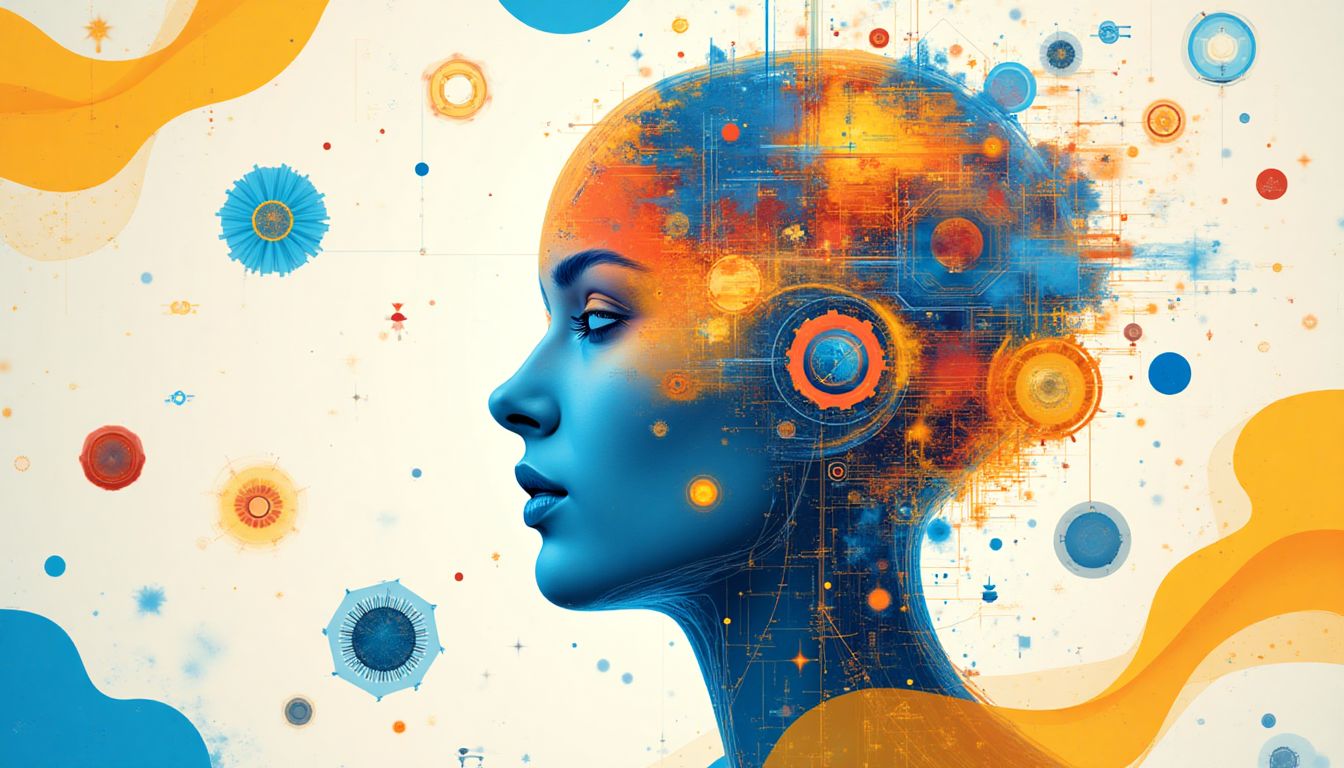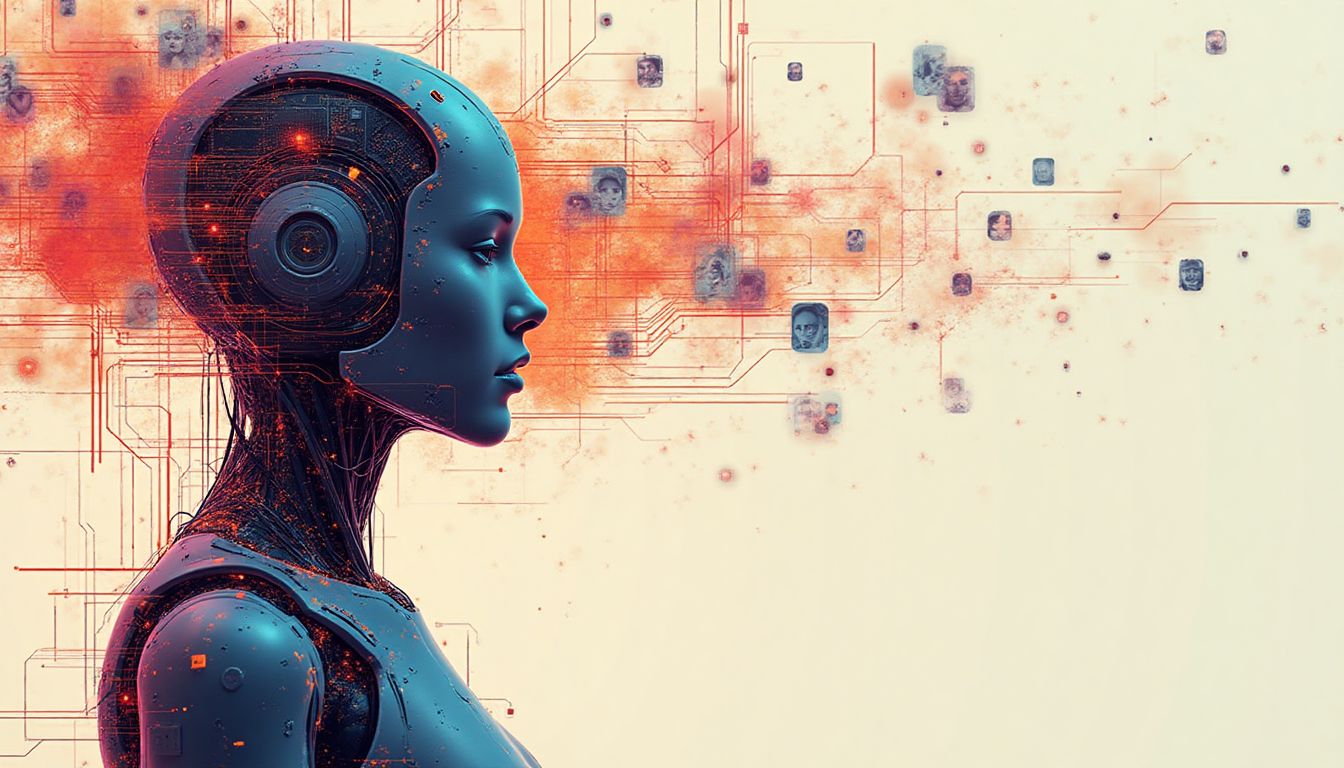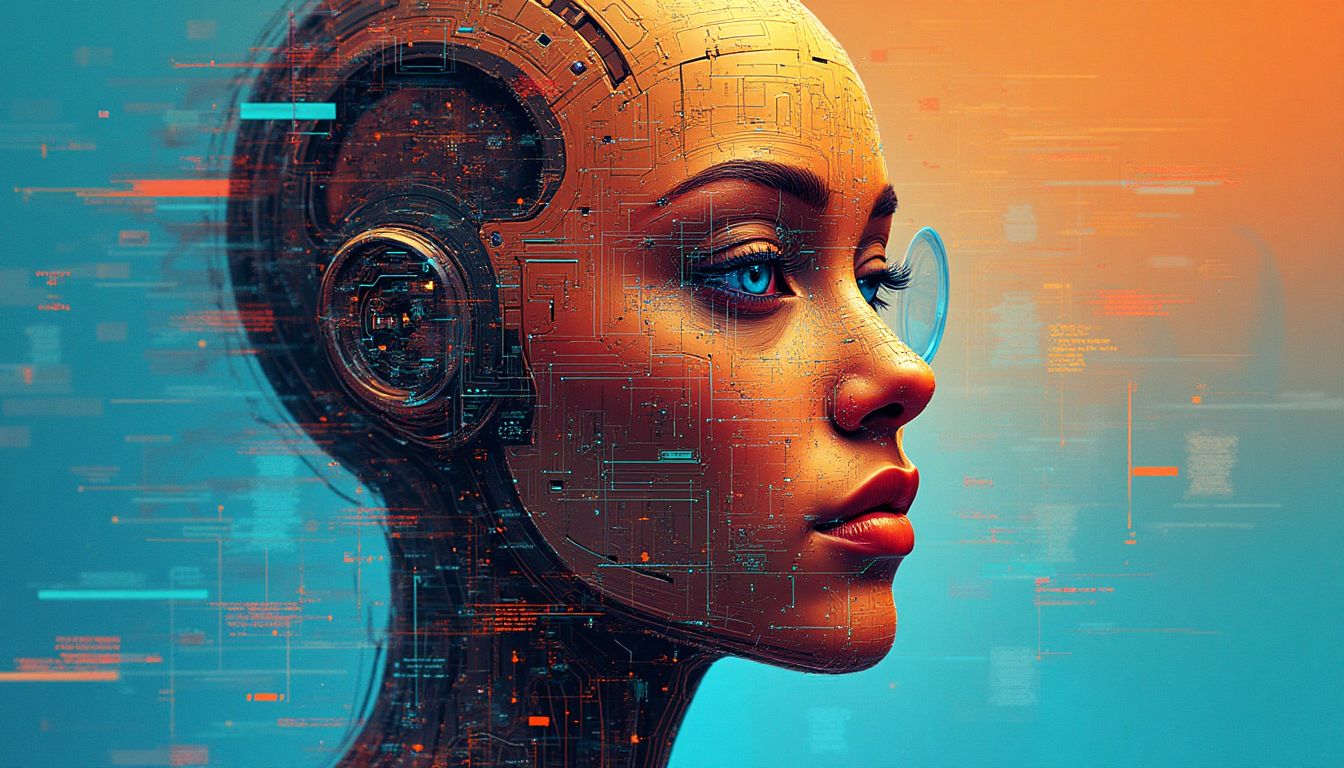Introduction
We are what we repeatedly do. Excellence, then, is not an act, but a habit. – Aristotle
In today's tech-driven society, Aristotle’s saying resonates eerily as we create robots that are now repeating patterns, not of excellence, but of our very own prejudices. The machines, designed to mimic human-like efficiency, are starting to showcase an unexpected and unwanted side effect. Yes, I'm talking about bias. More worryingly, racial bias. As robots and AI systems seep deeper into the very fabric of our daily lives, one must ponder: Can machines become prejudiced, merely by reflecting the data they ingest, or are they something more—a mirror to humanity's own shortcomings? At the intersect of technology and morality lies this labyrinthine dilemma.
Scholars like Kate Crawford, author of "Atlas of AI," Yuval Noah Harari of "Sapiens" fame, and Shoshana Zuboff, known for her work "The Age of Surveillance Capitalism," have warned against unchecked data biases creeping into AI. So, are we inadvertently programming robots to inherit our societal imperfections? The following journey unveils how we can either perpetuate inequity or pioneer an AI revolution of inclusivity and fairness.
Understanding Bias in Machine Learning
Machine learning is like teaching a parrot to mimic speech—only the parrot here is a sophisticated computer system, and the 'speech' is deciding who gets a loan or who gets hired. Simply put, machine learning involves training algorithms to learn from data, making predictions or decisions that ideally improve over time. But what happens when the data—the 'teachings'—is flawed, biased, or downright mistaken?
Let's paint a picture: developers use historical data to teach an AI model. This data could range from simple spreadsheets to complex databases, where every piece of information has been handpicked. The belief is that algorithms born under such circumstances are inherently neutral. But let's face a hard truth: the very notion of 'neutrality' is as mythical as unicorns. Algorithms are only as neutral as the data they're fed, and if our data comes from a flawed world, then biases sneak in like uninvited guests at a party.
The Paradox of ‘Neutral’ Algorithms: Imagine if the sole data source used to train a facial recognition system primarily comprises images of fair-skinned individuals. In theory, the AI should be neutral, but in reality, it’s like trying to use a cookbook without ingredients for half the recipes. The AI's accuracy suddenly dips when tasked with recognizing darker skin tones. This revelation isn’t limited to theory; real-world implications and misidentifications abound, from failed hiring processes to misguided criminal accusations.
Understanding bias in machine learning, therefore, requires a holistic look at how models eat, breathe, and live data. The stakes are high, not just in the tech world, but within our very societal structure, as we venture further into a digital age that taps into the limitless potential of AI. Acknowledging this, what paths forward can we envision to craft a future where AI mimics the best of humanity?
Real-World Consequences of Biased AI
The moment we let AI systems run wild with biased algorithms, we unwittingly unleash a Pandora’s box onto society. While technology offers unprecedented efficiency, it also brings the chilling reality of biased decision-making—affecting cities, corporations, and even individuals. The repercussions are all too real, as illustrated by a series of eyebrow-raising case studies. It's like discovering that your suave AI butler is actually making dinner reservations based on what's trending among only their favorite microchips!
Predictive Policing Algorithms and Racial Profiling
Imagine living in a world where the digital equivalent of Sherlock Holmes starts profiling you based on the crime rate in your neighborhood. Predictive policing tools, lauded as proactive crime stoppers, have unfortunately shown a penchant for racial profiling in cities like Chicago. The data used to train these systems often reflects historical biases, leading to disproportionate targeting of minority communities. It's as if these algorithms have taken a cue from Hollywood's casting habits, consistently typecasting certain groups in the perpetual role of suspects!
Recruitment Algorithms: How Biased Data Exacerbates Hiring Inequalities
Picture this: you apply for your dream job, only to be thwarted by a biased recruitment algorithm that favors traits it "learned" were prevalent in previous successful hires—traits that suspiciously resemble those of a certain demographic. Companies like Amazon have faced scrutiny for using such AI tools, which reinforced existing biases rather than championing diversity. It's akin to having an HR robot that thinks every workplace needs more clones of its binary best friend!
Autonomous Vehicles and Racial Bias
The next time you buckle up in a self-driving car, consider this: researchers have found that some models are worse at detecting pedestrians with darker skin tones. As technology races ahead, we must address these biases because the idea of AI bolting past someone simply due to darker skin is not just ethically wrong, it also poses an enormous safety threat. It's time software developers ensure that their code doesn't just drive cars but also drives us closer to innovation that doesn’t crash at the crossroads of diversity.
The Cycle of Bias: Data, Algorithms, and Society
Understanding the cyclical beast that is bias in AI is crucial. It's a bit like a dog's obsession with its tail; round and round it goes, creating an inescapable loop. This loop between data inputs and algorithmic outputs constantly churning societal stereotypes isn't just a technical faux pas—it's a zero-sum game for everyone involved.
Data Sampling Methods: How Historical Biases Affect Training Datasets
Imagine feeding your toddler nothing but broccoli; while they might grow up healthy, they'll likely cringe at vegetables forever. Similarly, faulty data sampling feeds AI systems information steeped in historical prejudices. For instance, when it comes to facial recognition, many datasets lean heavily on a limited subset of skin tones, failing at diverse representation. It's like teaching AI to see the world through monochrome-tinted glasses!
Feedback Loops: The Phenomenon of Biases Being Amplified in Subsequent Models
The feedback loop of bias is much like finding your absolute worst singing performance blasted across all speakers at a karaoke night. Each time an AI model "learns" from tainted data, it perpetuates and even magnifies these biases into successive generations of algorithms. Over time, patterns such as disproportionately flagging certain ethnicities as high risk in crime pattern forecasting become entrenched. It's a digital echo chamber we're way overdue for dismantling.
Societal Impact: The Ramifications of Biased AI Reflecting and Perpetuating Systemic Racism
Consider this: using biased AI in decision-making is akin to handing the judge's gavel over to an opinionated parrot—it mimics without understanding the significance. The problem intensifies when these systems influence major societal segments, perpetuating stereotypes and furthering systemic racism. The implications are profound, from unfair sentencing in the judicial system to skewed lending practices in banks. Left unchecked, biased AI has the potential to stall our progress towards social equity, turning tech-fueled dreams into dystopian realities.
Mitigating Bias in AI Systems
Tackling biases in AI requires active efforts to ensure these systems better reflect a fair and just society. One pivotal strategy includes algorithm auditing. Routine audits illuminate hidden biases, much like forensic accounting brings corporate misdeeds to light. Engaging experts to methodically review algorithms helps in identifying concerning patterns and making necessary adjustments. For instance, consider how Facebook’s research teams conduct algorithm audits to ensure fairer outcomes in their content curation.
Diversifying data sources forms the second prong of this strategic trifecta. Homogeneity in data can lead to AI systems that are oblivious to diverse perspectives. By curating rich, varied datasets, we overcome this limitation. Picture a world where AI understands not only a broad swath of languages but also cultural nuances, thanks to varied data training. Look at initiatives by IBM Watson, which emphasizes expanding their data sources to include comprehensive representation.
The third approach focuses on ethical AI development. Policies and governance play champions here, translating ethical aspirations into tangible frameworks. Initiating firm directives for development teams can guide them toward bias-conscious creation. Consider Microsoft’s ethical standards. They reflect a commitment to high moral ground in machine learning, ensuring inclusive practices.
Key Strategies for Mitigating AI Bias:
- Algorithm Auditing: Regularly conduct audits to identify and rectify biases.
- Diversify Data Sources: Ensure datasets are diverse and representative.
- Ethical AI Development: Implement strong governance and policy frameworks.
Future of AI: Accountability and Transparency
As we look into the crystal ball of AI’s future, a guiding principle emerges: accountability. AI’s increasing influence demands responsible governance to steer clear of the moral quagmires that unchecked power may spawn. A proposed framework could advocate for accountability akin to financial auditing standards, demanding every AI decision to be traceable. Transparency builds the bridge to public trust, akin to the role of a lighthouse guiding ships in treacherous waters.
The promise of transparency extends through the adoption of open-source algorithms. By making algorithms available to the public, communities can scrutinize, critique, and improve upon them as needed. Initiatives like TensorFlow exemplify this philosophy, asserting that collaboration fosters innovation and ethical adherence.
Finally, engaging communities elevates AI beyond tech-talk into a shared societal discourse. Collaboration with stakeholders, from educators to activists, fuels a robust exchange of insights and diverse opinions. Empower communities to partake in the developmental journey, as seen with initiatives by the Partnership on AI, encouraging grassroots level feedback and participation.
Principles for a Responsible AI Future:
- Regulatory Framework: Implement accountability measures similar to financial auditing.
- Open Source Algorithms: Encourage transparency and collaboration through open-source initiatives.
- Community Engagement: Foster stakeholder involvement in AI’s development process.
AI Solutions: How Would AI Tackle This Issue?
As artificial intelligence continues to evolve, it becomes paramount to develop systems that actively counteract biases, promoting fairness instead of perpetuating injustice. This section explores several innovative methodologies and frameworks capable of dramatically reshaping the AI landscape toward a more equitable future.
Implementing Bias Detection Algorithms: One of the most direct approaches to tackle AI bias is through the implementation of detection algorithms that continuously assess and refine their own outputs. These algorithms can analyze decision patterns and identify instances of bias, flagging them for human review and correction. For instance, data scientists can deploy tools like the Fairness Scorer, which scores machine learning model predictions based on the fairness of outcomes across diverse demographic groups. This proactive checking system promotes a culture of accountability within AI development teams.
Engaging Multi-Disciplinary Collaboration: Effective AI solutions must integrate insights from a variety of fields. Bringing together sociologists, ethicists, data scientists, and engineers creates a holistic framework that enriches AI system design. This could be facilitated by forming partnerships with academic institutions like MIT and organizations like AI Ethics Lab, which specialize in ethical implications in tech. For example, workshops and hackathons could be hosted to brainstorm innovative solutions for mitigating biases, resulting in a multi-dimensional approach to AI ethics that reflects diverse perspectives.
Developing Ethical AI Frameworks: Concentrated efforts must also be made to create comprehensive guidelines for AI development. Establishing a framework that focuses on ethical practices throughout the lifecycle of AI— from design to deployment— is crucial. The Eurisko Institute has proposed a set of ethical principles that can serve as a foundational reference for stakeholders. These might include guidelines for bias assessment, transparency, and accountability that all AI practitioners agree to uphold.
Action Schedule/Roadmap (Day 1 to Year 2)
Day 1:
Assemble an interdisciplinary team of AI researchers, sociologists, psychologists, and ethicists dedicated to tackling biases in AI systems. This team can work collaboratively with diverse institutions for broader perspectives.
Day 2:
Conduct an exhaustive analysis of existing machine learning algorithms to identify key areas where biases are evident. This involves using tools like the IBM Watson OpenScale to examine model performance across various demographics.
Day 3:
Compile case studies on historical instances of AI bias, including those found in predictive policing and hiring algorithms. Engaging with community organizations for firsthand accounts will enhance understanding and drive awareness.
Day 10:
Initiate a series of workshops and focus groups with diverse stakeholders—including communities affected by AI bias—to gather insights and contextual evaluations of how AI technologies impact daily life.
Month 6:
Develop and implement a pilot version of bias detection algorithms across select AI systems. Use controlled experiments to analyze their effectiveness in identifying and mitigating biases.
Year 1:
Publish preliminary findings, outlining key biases detected and proposed remedies. Strategically involve media outlets and social platforms for public discourse and transparency, allowing community feedback.
Year 1.5:
Launch community-driven feedback mechanisms to assess AI decisions. Continuous refinements will be made based on real-time evaluations and user experiences, ensuring that stakeholder input drives algorithmic alterations.
Year 2:
Release a comprehensive public transparency report detailing advancements and remaining challenges in AI bias remediation. Highlight the collaborative efforts made to rectify biases, reinforcing societal trust in AI technologies. Engage with governing bodies to advocate for policy change based on the report’s findings.
Conclusion: The Complex Path Ahead
The journey toward creating unbiased AI systems is fraught with challenges, yet it holds immense potential for a better future where technology uplifts rather than oppresses. As we harness the capabilities of artificial intelligence, we must carry the weight of our societal biases into the conversations surrounding its development. The implications of unchecked biases ripple through our society, and as AI becomes further integrated into everyday life, we are ethically bound to confront these issues head-on.
By leveraging multi-disciplinary collaboration, implementing robust monitoring systems, and advocating for ethical frameworks, we can guide AI towards becoming an ally in the quest for equality. However, the conversation doesn't stop here. Engaging communities, embracing feedback, and remaining transparent are crucial elements in determining the fate of our technological creations.
We stand at a crossroads, filled with opportunity and responsibility. The question remains: can we drive change in the face of potential adversity? Will we refuse to repeat the mistakes of the past as we innovate for a future that reflects the best of humanity? The path ahead is complex, but with concerted effort, the goal of an equitable AI landscape is within reach. The time for action is now.
FAQ
- Can AI be inherently biased?
Yes, AI can reflect human biases found in the data it was trained on. This can lead to outcomes that are not fair and may affect certain groups negatively. For example, if an AI system is trained mostly on data from one racial group, it might not understand or serve others well. You can learn more about bias in machine learning.
- What are some examples of biased AI systems?
Biased AI systems can be found in several areas:
- Predictive policing uses algorithms to predict where crimes may occur, often leading to over-policing in certain neighborhoods.
- Hiring tools designed to scan resumes may unfairly favor applicants based on data that relates to race or gender, which is often biased against certain demographics.
- Facial recognition technologies have been found to misidentify people of color at higher rates than white individuals.
- How can we reduce bias in AI?
Reducing bias in AI involves several strategies:
- Diversifying training datasets to include many different groups of people.
- Conducting regular audits to check how well the AI performs across different demographics.
- Involving diverse teams in AI development to bring in various perspectives.
- Why is transparency important in AI?
Transparency is crucial because it builds trust and accountability. When people can see how an AI system was created and how it works, they can question and improve it. This helps to ensure that AI systems can be reviewed and fixed if they show bias. For more insights, check out this insightful article on accountability in AI.
- What role do policymakers play in combatting AI bias?
Policymakers help by setting rules and regulations that require companies to create ethical AI systems. They can propose ethical standards to ensure fairness and accountability in AI development to protect people from discrimination.
- Can we trust AI to make important decisions?
Trusting AI to make big decisions is complex. While AI can analyze vast amounts of data quickly, it can also make mistakes, especially if it has biases. It's essential to have human oversight in important decisions made by AI, such as those in healthcare or law enforcement. This ensures there is a human touch and ethical consideration involved. For further reading, visit this Forbes article.
- How can we ensure AI serves everyone equally?
To ensure AI serves everyone fairly, it's vital to include different perspectives during development. This means gathering input from varied communities and continually testing systems to identify biases. Engaging in discussions, like those held at places such as AAAI conferences, can also help highlight these issues and solutions.
Wait! There's more...check out our gripping short story that continues the journey: The Enigmatic Dance of Fate
Disclaimer: This article may contain affiliate links. If you click on these links and make a purchase, we may receive a commission at no additional cost to you. Our recommendations and reviews are always independent and objective, aiming to provide you with the best information and resources.
Get Exclusive Stories, Photos, Art & Offers - Subscribe Today!





























Post Comment
You must be logged in to post a comment.